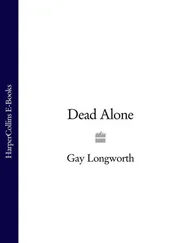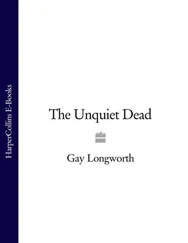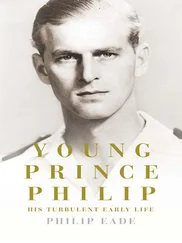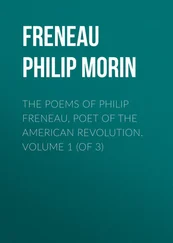At first, these ancestors of the Russians, Ukrainians, Poles, Hungarians and others (for scholars know of no characteristics which distinguished them from one another until very much later) were confined to a swathe of territory to the north and west of the Black Sea. Much of the country beyond, later known as Russia, was still covered with icy marsh, and conditions over large areas even further south did not allow life to flourish in any form. The atmosphere was as dry as the temperature was cold, and, since life depends on humidity, the vast terrain was bleak, forbidding. Before humans could survive there, an ecological system with the potential to sustain human life had to develop.
The first need was for plant life. The earliest species to appear were those with the highest tolerance of cold. Tiny, rudimentary plants pioneered the taming of the wastelands, then successively larger plants, including trees — the aspen and the birch (still characteristic of northern Russia), the pine, the larch, the hazel and the willow. Where the warming produced excessive wetness, the spruce helped make the area more hospitable. As the climate became milder 7,000 to 8,000 years ago, the hornbeam and linden appeared, and, where conditions favoured them, deciduous oak and elm took root and flourished. The famous Russian forests were in the making.
Towards the milder south, however, the forests gradually thinned out into the rolling steppe. The vegetation there was thick, but rainfall was less certain and the winds which blew across from Asia were so fierce that, except in deep ravines which afforded some protection, trees were comparatively rare.
The moister conditions had already created an environment hospitable to insects, including the productive bee. As water temperatures rose, more and more species of fish appeared, eventually including pike, perch and salmon, and it became warm enough to accommodate the water chestnut too. Ducks and other water fowl arrived, and larger, more complex, animals moved into what had been wasteland — hares, beavers, red deer, roe deer, and a variety of predatory species including the fox, the wolf, the lynx, the glutton (similar to the American wolverine) and the lumbering, honey-loving brown bear. And, now a suitable environment had been created, human beings also entered the scene.
They had begun to exploit certain wild creatures in the south country where they had sheltered during the Ice Age, and they followed them northward into their new habitats as the ice receded. They hunted deer and wild pigs and horses for food, and in time they were to domesticate some of them. Primitive man understood breeding. He also learned to cultivate certain grasses for their seeds, and to crush them into flour, which could be cooked and eaten. The descendants of the first practitioners of this systematic crop-raising and animal-rearing were to carry these techniques northward. However, the movement of humans from the southern lands into the virgin lands to the north was gradual and exploratory. People moved cautiously, edging little by little into the new environment, and the yields from farming were, as yet, sparse and unreliable. Hunting, fishing and gathering whatever edible plants nature provided in season remained essential to human sustenance.
Indeed, the hunters led the way into the virgin territories, penetrating to the edge of the northernmost areas that were free of ice in summer, tracking animals and birds to kill, not only for food, but also for their fur, feathers, horns and bones, from which all manner of useful things could be made. Others trekked upriver and explored lakes to find the points where fish could be found in abundance and caught most easily, and seasonal gatherers (mostly women and children, one imagines) came with the men, searching for edible grasses, berries, nuts and other forest fruits like mushrooms. Normally they would retreat to base at the onset of winter, carrying their spoils. But as populations grew, so did pressures to extend the areas of permanent settlement. Similar pressures affected the primitive societies of central Europe too, so that migrants from the west, including those who were subsequently to be identified as Baits and Finns, also moved into fringes of the north-land.
The people who explored and eventually made homes in the Russian lands belonged to the species Homo sapiens sapiens. They were, as we have seen, genetically distinct, Caucasoid in anthropological type, and capable of speech and language. Their culture was of the Stone Age, but of the later, more sophisticated, palaeolithic kind. We can infer that they were by nature curious, venturesome, ingenious and adaptable.
Their adaptation to their new homeland took two forms: conscious and unconscious. The conscious process involved learning from experience, collectively as well as individually, and the recording of experience through memory and storytelling down the generations. Unconscious adaptation took place over a much longer timescale, as it still does, and was genetic. The DNA of the Russians’ ancestors gradually changed in response to climate and environment. In more northerly areas, where they had less exposure to sunlight, their hair grew fairer and their skin lighter. In colder areas their noses tended to grow longer, allowing the air they breathed in a longer time to be warmed in its passage to the lungs; and, thanks to the processes of natural selection, they developed resistance or immunity to some diseases. Their genetic structure was to change somewhat as they encountered other groups and mated with them, but their essential characteristics are broadly identifiable and have persisted into our own times.
Although we can relate no personal stories from these earliest, formative, times, we can begin to picture representative Russian men and women. A huge research project mounted by the Soviet Academy of Sciences in its heyday was devoted to describing the Russians in terms of physical type and to investigating the historical origins of their physical characteristics. The work, carried out in the later 1950s by Dr V. Bunak and his team of ethnographers, examined no fewer than 17,000 adult men and women in over 100 regions of Russian settlement. The large sample made it statistically possible to map an anthropological type in all its variations. Whereas earlier research had concentrated on the geographical spread of head shapes and body height, this study also registered face size (breadth and height from the brow), complexion, hair colour, shape of nose, thickness of lip, body height, strength of beard growth, and other indicators including blood group. Variations in each characteristic were mapped, and combinations of them were grouped according to geographical area.
It was found, for example, that in north-west Russia people were moderately brachycephalic, or short-headed with rather broad skulls, and had fairish hair, broad faces, comparatively weak beard growth and, often, a high base of nose, though all these characteristics varied in intensity within the region. To the west the Russians were found to have longer faces, darker hair (by contrast to their fair-complexioned Finnic, Balt and Mazurian Polish neighbours), lower nose-bases, and a higher incidence of folded eyelids. In the south-east, by contrast, people were mostly mesocephalic, with medium-shaped skulls and skull capacity. They had bright complexions and dark hair; and again these characteristics were more pronounced in some parts of the region than in others. 3
Variations in build and appearance reflected intermarriage with neighbouring groups, but also natural selection in response to differences in diet and climatic conditions. The better nourished people are, the taller they tend to be; the greater their exposure to the sun, the darker their colouring; the greater the cold, the more Mongoloid their faces; the less their exposure to light, the fairer their hair. 4To this extent the appearance of the Russians, as with all humanity, is partly a response to their environment, which continues to change.
Читать дальше
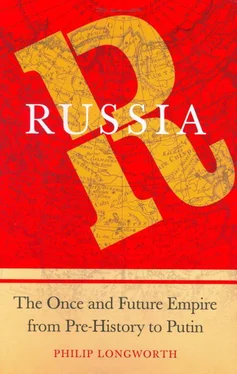




![Stephan Orth - Behind Putin's Curtain - Friendships and Misadventures Inside Russia [aka Couchsurfing in Russia]](/books/415210/stephan-orth-behind-putin-s-curtain-friendships-a-thumb.webp)

